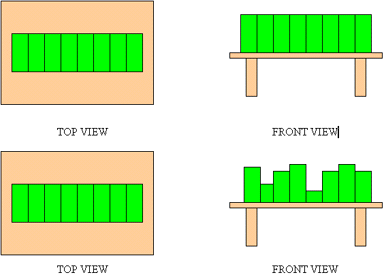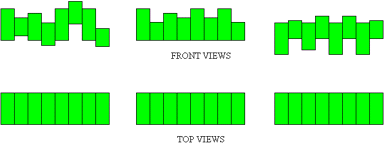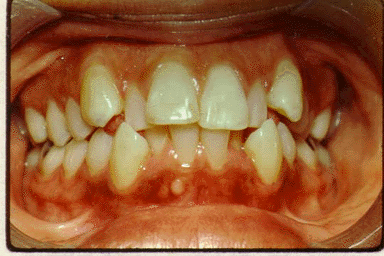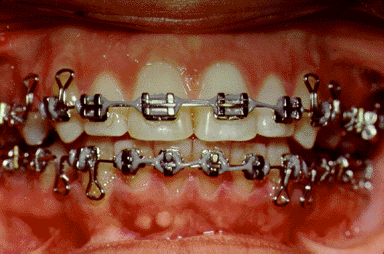

|
|
|
The second phase of orthodontic treatment is leveling. Leveling is a method used to align the upper teeth properly with the lower teeth. During the alignment phase, the teeth were lined up in a smooth curve. The smooth curve was viewed from a position looking down on the biting surfaces of the teeth. The alignment process did not address lining up the upper with the lower teeth. Alignment allows you to line up the boxes when viewed from the top.
Suppose all of the boxes were not the same size when looked at from a different view. The two types of boxes would look identical from a top view but very different from a front view.
If the boxes were allowed to float free in space, then you do not have a flat surface for the boxes to line themselves on. Any number of possibilities could be used to line up the boxes in a frontal view; however, the top view of all of these combinations is the same.
Now suppose you wish to align two (2) rows of boxes to fit against each other. You would accomplish this task in the following manner.
The challenge of leveling is to make the upper and lower teeth fit together like the boxes shown above. By making the biting surfaces all at the same level, it is possible to make the upper and lower teeth fit together. Alignment allows you to align the teeth in a smooth curve. Leveling continues the process by lining-up the teeth to be at the same level so they can fit against each other.
The process of leveling is accomplished by intrusion or extrusion of the teeth so that the upper and lower teeth come together. Leveling requires a wire with the following specification relative to the wire used during the alignment phase of treatment:
higher strength Shape:
Note:
Would you prefer a round or a rectangular wire? Size: Note: Nomograms allow you to compare many wires of different shapes, sizes, and compositions to each other. 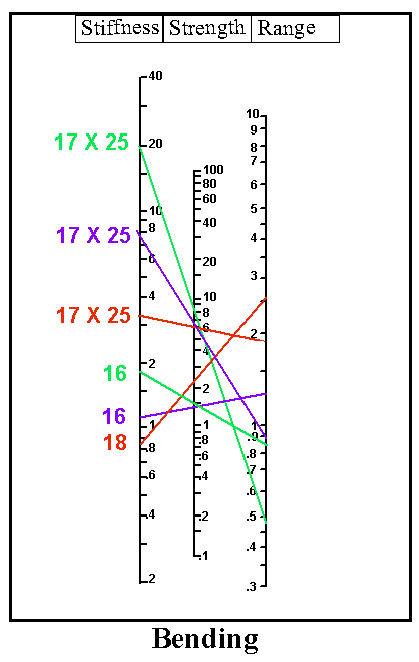

Which wire would work best for this phase? With the proper orthodontic technique, your patient's teeth will move to result in the following configuration:
Last Update: August 13,1998 Please direct questions and comments about this page to appl@net.chem.unc.edu Designed in cooperation with The Shodor Education Foundation, Inc. © Copyright 1998 The University of North Carolina at Chapel Hill |


